Not just sleep: all about hibernation
Expert reviewers
Essentials
- Hibernation is a way animals conserve energy to survive adverse weather conditions or lack of food.
- It involves physiological changes such as a drop in body temperature and slowed metabolism.
- Research into the processes involved in hibernation could result in medical benefits for people.
A bear is curled up in a big, fuzzy ball, immobile and silent. It’s breathing very, very slowly and, every so often, it lets out a very loud snore. It looks like it’s having a good old snooze. In fact, it’s doing something else. It’s not exactly sleeping, but it’s not exactly awake either. It’s hibernating.
But isn’t hibernation just a long—sometimes really long—sleep? Well … not exactly. In fact, many animals periodically ‘wake up’ from hibernation, and one reason they do so may be to catch up on some slow-wave sleep.
So if hibernation isn’t sleep, exactly, then what is it? And why do some animals hibernate? Do they just prefer to spend winter tucked under the doona? Do they detest winter sports? Or are they just lazy? Let’s take a closer look and find out.
An energy-saving device
While there are physiological changes associated with sleep (such as slowed breathing and heart rate), they are not nearly as dramatic or significant as those which occur during hibernation. When hibernating, an animal’s metabolism slows significantly: its heartbeat slows, it breathes more slowly (some animals even stop breathing for periods of over an hour) and its body temperature drops—in some extreme cases to below the freezing point of water (zero degrees Celsius). And here we get to the reason why animals hibernate: reducing their metabolism allows them to conserve energy.
To understand why they might need to do this, let’s take a step back and look at the difference between endothermic and ectothermic organisms.
Ectothermic animals are those whose body temperature depends on the ambient temperature. Endotherms, by contrast, can regulate their own body temperature by generating internal heat (by combusting fuels). People are endotherms. In everyday language, we tend to make a distinction between ‘cold-blooded’ animals, and think of things like snakes and lizards, and ‘warm-blooded’ animals, like mammals and birds. However, this distinction can be a bit misleading, since some fish, reptiles and insects are actually fully or partially endothermic.
In some ways, being ectothermic is an advantage—it means you don’t waste energy regulating your body temperature, and therefore don’t need so many nutrients. On the other hand, ectotherms are more reliant on environmental conditions: a lizard, for example, can only warm up from a cold spell if heat from an external source, like the sun, is applied. Endotherms, by contrast, can warm themselves up by producing heat metabolically and by shivering, for example.
But for endotherms to be able to regulate their temperature, they need enough fuel to burn—in other words, they need enough food to counter the effects of cold. This can be a challenge when freezing weather comes along or when food is scarce. So, in order to survive, many endothermic animals go into what’s known as a state of ‘torpor’. During torpor, physiological processes, like breathing and heart rate, slow down. The body temperature is set at a new, lower point. Animals that are able to adjust their (base) body temperature and metabolism in this way are known as (take a deep breath) heterothermic endotherms.
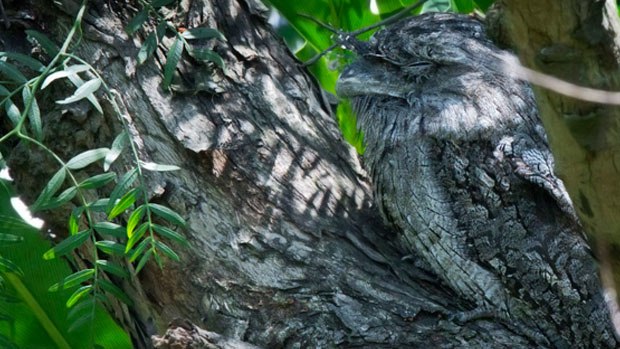
Tawny frogmouths are an example. The largest bird known to employ torpor, it goes into this energy-saving state at night or in the early morning, especially on cold winter days, between which it feeds and functions as usual. In fact, many birds enter daily (or nightly) torpor, including kingfishers and owls, as do many small mammals.
So how does this relate to hibernation? Well, hibernation is essentially a series of bouts of torpor that each last for many days. Hibernation differs from daily torpor in that it usually involves much lower body temperatures and metabolic rates, and is often seasonal. In addition, while animals who go into daily torpor wake up and forage or feed in the usual way, hibernating animals either feed off their body fat or on specially stored food.
Who, where, when?
When we think of a ‘typical’ picture of hibernation, many of us tend to think of bears snuggling down for the winter, such as the famous American black bear. Like many other hibernators, they pig out in the warmer months, gaining up to 13 kilos a week on carb-rich berries and other food. They also prepare a special place to hibernate (a hibernaculum, if you want to get technical)—a den lined with leaves and twigs. When winter sets in, the bears hole up in their dens and go without eating, drinking, exercising, urinating or defecating for as long as 100 days, waking up somewhat lighter but apparently none the worse for wear.
Hibernation aficionados, however, disagree about whether bears actually hibernate. During their winter snooze, bears’ body temperatures remain relatively high, only dropping by about 5 degrees Celsius. They can also move around, with mothers able to suckle their young—quite a contrast to the stiff, ‘frozen’ bodies of smaller hibernators. For this reason, some people prefer to call it a ‘winter sleep’, rather than hibernation. Nevertheless, the metabolic rates of bears during this time are comparable to those of other hibernators; their heartrates slow to around just 4 beats per minute, and oxygen consumption drops by around 75 per cent, with the bears taking only one or two breaths per minute. This suggests that the same physiological processes are at play in overwintering bears as in hibernating animals.
Who hibernates?
Test your knowledge or take a guess to discover which of these five animals hibernate.
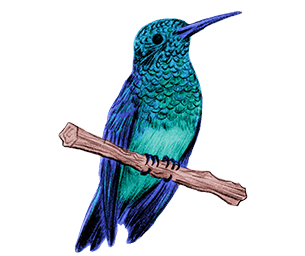
Found in the Americas, hummingbirds do not hibernate, but, like many birds, they go into a daily (or in their case, nightly) state of torpor. They do this during migration to save energy for the next leg of the journey.
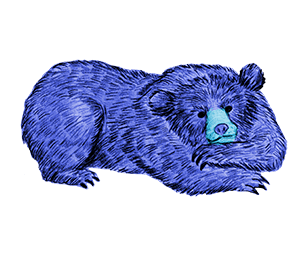
Black bears spend several months each year in a winter den, but are not considered ‘true’ hibernators by some. This is because their body temperature only drops by around 3 to 5 per cent.
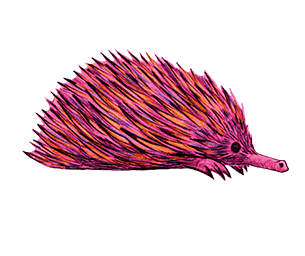
Did you know some Australian animals hibernate? Echidnas do—they’re found all over Australia including in the chilly Australian Alps.
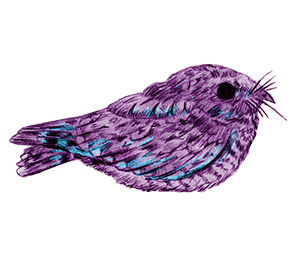
Found in the United States and Mexico, these are the only birds known to hibernate. Their body temperature drops from 38 degrees Celsius to about 5 degrees Celsius.

Do you dream of spending winter under the doona? Unfortunately, people can’t hibernate, but scientists have discovered that some of our close relatives, lemurs, can. So, who knows—maybe we will be able to one day.

Hummingbird
Doesn’t hibernate

American black bear
Sort of hibernates

Short-beaked echidna
Hibernates

Common poorwill
Hibernates

Human
Doesn’t hibernate
Bears are not ‘typical’ hibernators in another way—they’re big. It’s small animals, like hedgehogs, bats, hamsters and squirrels who tend to be hibernators, for a number of reasons. Firstly, because warming up from hibernation would take bigger animals longer, and use a lot of energy, it’s not practical for them to enter deep, multiday torpor. Secondly, hibernation is one of the only survival strategies available to tiny creatures who are unable to migrate to escape deadly weather or to find an alternative source of food. And thirdly, smaller animals have a higher surface-area-to-volume ratio, meaning that they are more susceptible to losing heat from their skin. If you’ve ever stopped to wonder why little creatures curl up into a ball over winter, here’s your answer. No, it’s not to maximise their cuteness factor, it’s to reduce their surface area, thereby minimising heat loss.
Okay, so maybe bears don’t exactly hibernate, but hibernation happens across winter, in really, really cold places, right? Right?
Well, again, not exactly. While hibernation is usually strongly seasonal, hibernating animals don’t always pop off for a long snooze over winter and wake up in spring. Insectivorous bats, for example, often wake up from hibernation to forage on warmer winter days before entering another period of multiday torpor. And hibernating echidnas in the Australian Alps typically wake up in mid-winter to mate.
As for really, really cold places, it’s true that many animals do indeed hibernate to survive incredible drops in temperature. The Arctic ground squirrel of Alaska, Siberia and Canada, for instance, hibernates through seven months of freezing weather, its body temperature dropping to almost minus 3 degrees Celsius! Amazingly, the squirrels’ blood manages to remain liquid, even at these extreme temperatures.
But hibernation is not, as used to be thought, only restricted to just a few mammals and birds in very cold climates, but occurs in a range of animals living from the arctic to the tropics. The fat-tailed dwarf lemur for example, is a hibernating tropical mammal living in western Madagascar. It hibernates during the long dry season, a time when food and water are scarce. The lemur’s fat tail isn’t just for show, but is directly related to its hibernation habits—during up to eight months of hibernation tucked up in a tree hole, the lemur lives off its tail’s fat stores. The fat-tailed lemur was not just the first tropical mammal found to hibernate, but the first primate known to do so, with other hibernating lemur species having been found since.
Australian hibernators: turning conventional wisdom upside-down
In the 1980s, Australian scientists made a breakthrough in the understanding of hibernation when they discovered that echidnas hibernate.
Previously, scientists looking at echidnas in the lab had found them very reluctant to enter torpor, concluding that they don’t hibernate. Wanting to investigate further, in the late 1980s scientists captured echidnas from the Australian Alps in New South Wales. They implanted small, temperature-sensitive radio transmitters, releasing the echidnas back into the wild. By tracking their movements and temperatures over winter, they saw patterns that closely matched those of classic mammalian hibernators: multiday periods of torpor punctuated by periodic arousals to warm up. Echidnas, they discovered, were hibernators!
But the significance of this discovery goes deeper. It used to be thought that hibernation was a relatively recent evolutionary adaptation, derived as a specialisation for life in cold climates. The discovery that echidnas hibernate, however, challenges this view because echidnas are monotremes, and monotremes are very old in evolutionary terms, having split from other mammals over 120 million years ago. Hibernation, thought the researchers, might be a much more ancient phenomenon than was previously thought.

So now we have examples of hibernators in all three mammalian subclasses: placental mammals, marsupials (such as pygmy possums) and monotremes. In evolutionary terms, some scientists postulate, this could indicate that hibernation was around before a common evolutionary branch diverged (resulting in monotremes on the one hand, and marsupials on the other). They suggest that hibernation is an ancient mammalian capacity which may have evolved from reptiles’ capacity for seasonal dormancy.
Others argue that, since we know of a bird that hibernates (the poorwill), by this logic we’d actually have to trace hibernation back to the common, pre-reptilian ancestors of mammals and birds, which is very unlikely. Rather, they suggest, the capacity to hibernate probably evolved independently in each of these groups, rather than being a result of having a common ancestor. Because the ability to lower metabolic rates meant those animals that could do so were more likely to survive, over time evolutionary processes selected for animals that were able to hibernate.
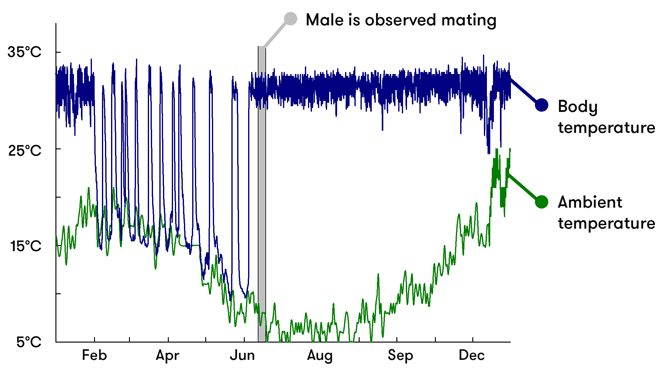
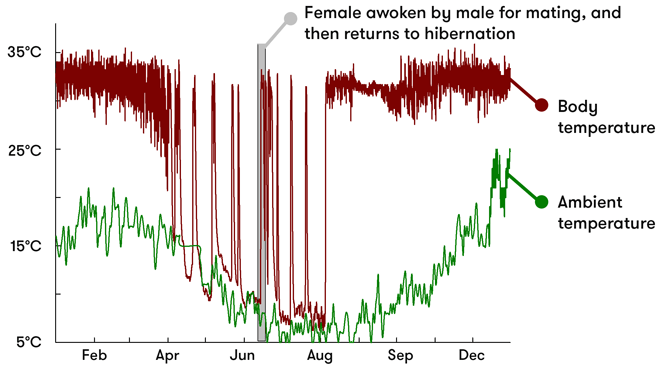
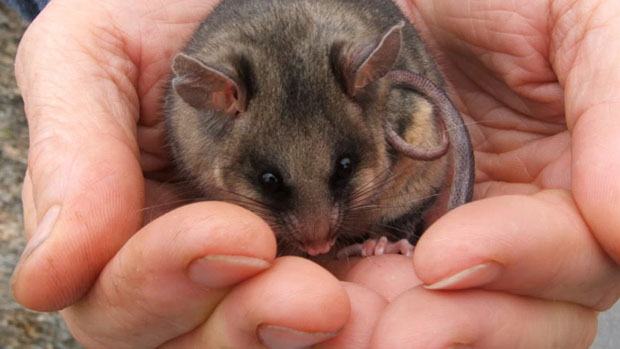
What can hibernation teach us?
Arctic ground squirrels, those supercool hibernators we met earlier, could provide clues to understanding Alzheimer’s disease. Like other hibernators, squirrels’ metabolism and core body temperature drop (in the squirrels’ case, to below the freezing point of water), and they wake periodically to shiver themselves back to more reasonable temperatures. During hibernation, the squirrels’ brains undergo incredible stress; neurons shrink and connections between them shrivel. But they also demonstrate incredible plasticity. During periods of arousal, the squirrels’ neurons recover—blooming to even greater levels than usual, then settling back to normal. It’s thought that this recovery may have something to do with a protein called tau which builds up in the brain cells of hibernating squirrels—and in the brains of people with Alzheimer’s disease. Somehow the squirrels are able to scour tau from their brains when they wake up. How? The answer could provide insights into Alzheimer’s and other neurodegenerative diseases.
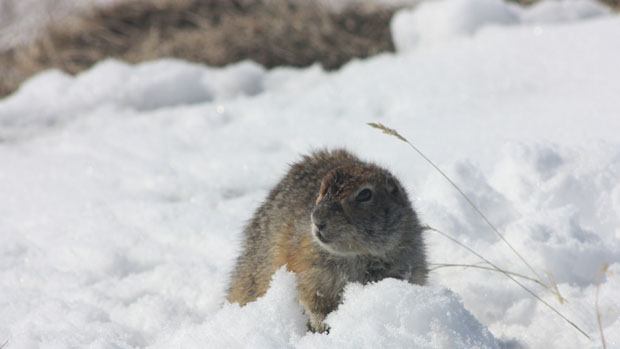
How else might hibernation help humans? Some other areas of research include:
- the ability of hibernators’ cells and tissues to survive very cold temperatures, an understanding of which could enable us better preserve and transport human tissues (for instance, for transplantation)
- the fact that hibernating animals don’t experience muscle deterioration after long periods of not moving, which could potentially help us prevent muscle deterioration due to hospital bedrest or to treat muscle disorders
- the lack of bone deterioration in hibernating animals , even after long sedentary periods, an understanding of which could lead to new ways of treating degenerative bone problems or diseases.
What about space travel? we hear you ask. Could an understanding of hibernation enable humans to go into a similar state of stasis? Perhaps we might be able (as some recent NASA-backed work suggested) to ‘sleep our way to Mars’, or to travel to far-off galaxies without needing large supplies of food or oxygen. The discovery that lemurs hibernate offers tantalising possibilities for human hibernation because, as primates, they are genetically very similar to us. Some researchers point out, however, that we can’t necessarily extrapolate data from small animals, who can hibernate naturally, to humans, who can’t. Nevertheless, from new understandings into the role of torpor in a range of animals, to new insights into evolutionary processes, there’s a lot we can learn from these consummate snoozers.





